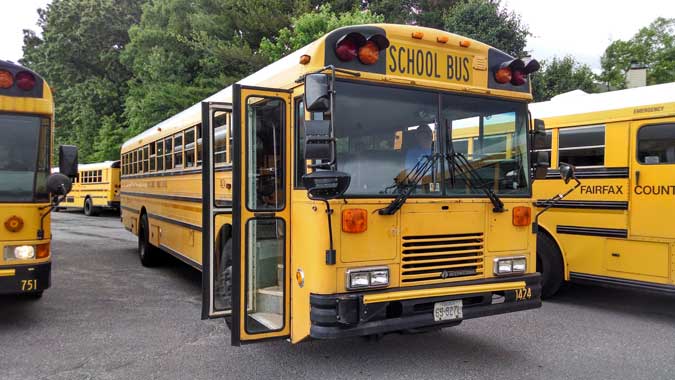

As students from Leesburg to Petersburg return to school, one frequently asked question is, “why don’t school buses have seatbelts?”
According to the National Highway Transportation Safety Administration, school buses are the safest way to get to school. They are more highly regulated than passenger vehicles, and they are designed to be much safer. They are highly visible, and have flashing lights to further increase their visibility.
In their seat configuration, school buses use a safety system called “compartmentalization.” The way the seats are set up creates a bubble of safety for the passengers, and in most crashes, the main impact will be isolated to one part of the bus. Smaller buses don’t have the same advantages, though, and are usually required to include shoulder and lap belts.
For drivers sharing the road with busses and students here are some safety items for review:
1. Don’t tailgate buses. Leave plenty of room so you don’t rear-end it in if it stops suddenly.
2. Passing a bus when the lights are on, and the stop sign is up, is considered reckless driving in Virginia and is a Class 1 misdemeanor. It has serious consequences including fines up to $2,500 and added 6 demerit points to your drivers licence. It may also include up to 1 year in jail.
3. Obey all speed limits. In addition to normal speeding ticket costs, speeding in school zones carries additional fines.
4. Give school buses plenty of space near turns. Their extended lengths make tight turns very hard. On a road with a right-hand turn lane, give the bus extra space on the left because they may need to adjust before making a right-hand turn.
5. When waiting for the bus, students should be encouraged to stay well on the sidewalks and not lean into the street to watch for the bus. Adults should refrain from stepping off the curb to look for buses, too.
6. Students should be reminded that a bus stop is not a place to run and play. One way to minimize the challenge is to not arrive too much more than 5 minutes before the bus is scheduled to arrive. Loitering at a bus stop is not recommended.
7. Crossing in front of the bus should be avoided, but if a student must cross in front of the bus, they should stay at least 10 steps in front of the bus, so the bus driver can clearly see them.
Best wishes for a safe and happy school year from all of us at Burnett & Williams!